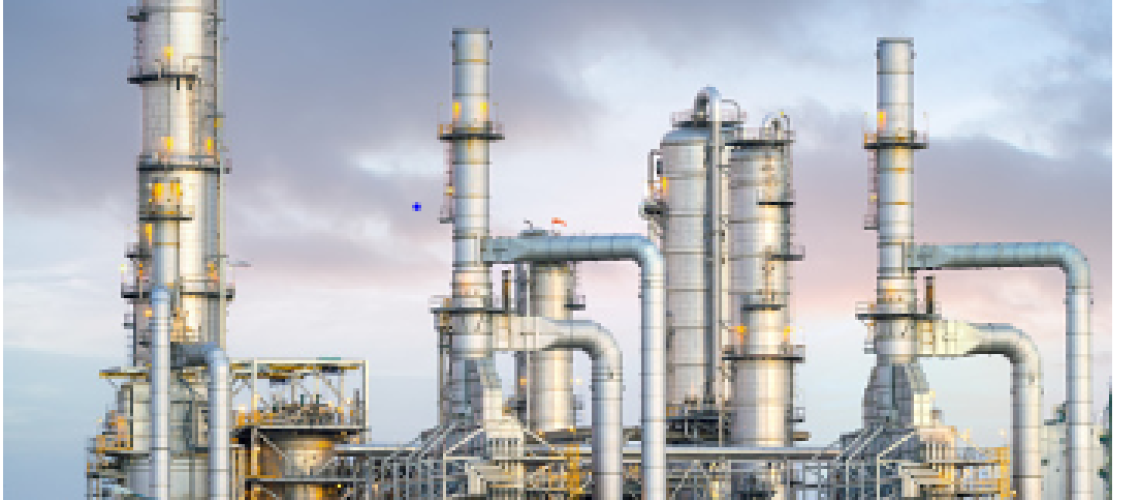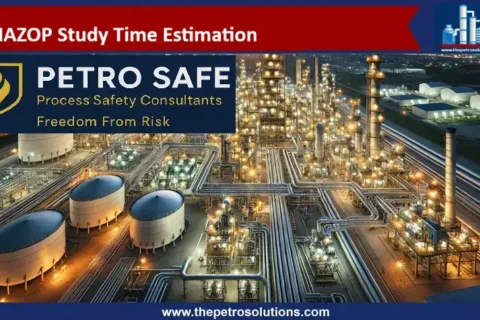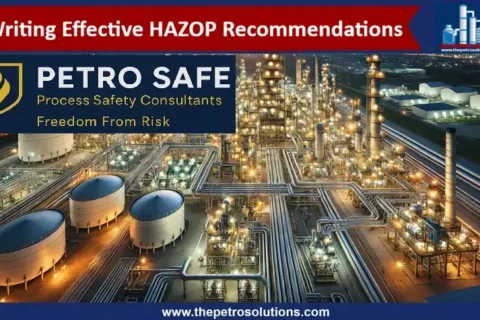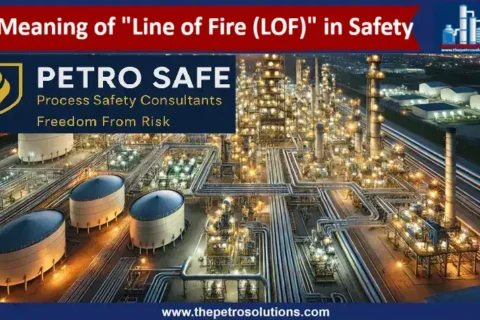Hot Hydrogen Stripping is the dry-out process of spent hydroprocessing catalysts at high temperatures with the help of hydrogen gas. The process is normally applied during turnaround for the replacement of the spent hydrotreating or hydrocracking catalysts. Hot Hydrogen Stripping Process serves the following purposes;
- Removes coke that helps in catalyst regeneration.
- Cleaning of the hydrotreating reactor internals by removing hydrocarbons, greases, and scales.
- Removal of H2S from the system for safe handover to maintenance during the turnaround.
- Dry out of the spent hydrotreating catalyst before the removal.
Despite the benefits, the hot hydrogen stripping needs to be carried out carefully once the process can lead to the reduction of the metals in active phases of the catalyst if a very low H2S concentration is applied in the reaction system. By this reason, the catalyst licensors recommend a minimum concentration of H2S in the recycle gas (normally above 1.000 ppm) during the hot hydrogen stripping process to minimize the risk of catalyst deactivation by metal reduction. Further, as the hot hydrogen stripping is performed at very high temperatures (i.e. near to design temperature), then the operating team should be cautious to avoid catalyst damage.
Catalysts Passivation Process is also being applied worldwide to reduce the downtime of the unit as compared to the conventional Hot Hydrogen Strip method. The catalysts and equipment surfaces are coated with an organic film which stops oxygen penetration and reaction. The passivated catalyst can be unloaded under air and eliminates hazards related to the inert entry.
Hot Hydrogen Stripping activity is critical and time-consuming that requires 3~4 days to complete the whole process. As this activity is performed after long durations (i.e. 5~10 years); the operations team should be competent and well trained for the execution of the steps. Proper procedures and plans should be developed and resources should be managed to achieve the desired results. View the simple PFD of hydroprocessing unit.

Hot Hydrogen Stripping Procedure
This procedure is applied with the shutdown of the unit for maintenance handover during the turnaround. All the upstream and downstream units should also be in line to provide the required resources like hydrogen, amine and washing water etc.
- Reduce the unit liquid feed flow to a minimum as per recommended rate and stop the feed oil. Also, reduce the hydrotreating reactor temperatures along with the feed rate. It is better to bring the reactor below 300 °C to avoid the sudden impact of liquid feed stop. Further, when the liquid feed is stopped then the feed heater should be shut down as per feed low flow logic because it can lead to a sudden temperature rise of the gases in the reactor. After the feed stop, heater main burners again can be restarted as per requirement and advised temperature rate.

- Maximize the recycle gas flow rate towards the reactor. Make-up gas would require to maintain system pressure and purity of hydrogen gas above 80 %. Amine circulation should be continuing to remove H2S from the system. This will help to reduce the Nitrogen requirement for purging the reactor circuit before catalyst unloading. Further, wash water injection to the reactor circuit can also remain to continue for ~ 24 hours to properly remove the H2S from the high-pressure separator and sour water header.
- During the hot hydrogen strip, sulfur from the active sulfides of catalyst metals is gradually stripped thus leaving the catalyst in the reduced form.
- For the protection of reactor effluent-stripper feed exchangers, close circulation of cold diesel or flushing oil should be established. This will reduce and control the temperature of the shell side of the exchangers. This circulation is mandatory before the temperature rise of hydrogen feed gas to the reactor otherwise the exchangers may be damaged due to high temperature on one side of the exchanger.
- Continue the gas circulation through the reactor for ~ 4 hours, until reactor sweeping is completed and no liquid is appearing in the high-pressure separator. During sweeping, a fired heater can be taken into service to maintain the reactor temperature at ~ 250 °C.
- After sweeping completion and ensuring flushing oil flow establishing on shell sides of reactor effluent- stripper feed exchangers, start to increase the reactor temperature at a rate ~ 25 °C or recommended by the vendor. The temperature of each bed is increased up to 380~390 °C. The maximum recommended temperature for Hydrogen stripping is 400 °C depending on the design temperature of the reactor. Hold the catalyst at a temperature of 380~390 °C for 2~4 hours. Also, quench gas can be used to maintain the equal profile of the catalyst beds. During this condition, critically monitor the temperatures of the reactor, exchangers, vessels, feed heater, and other equipment, that should not exceed the design temperatures.
- During temperature rising stop the amine circulation in recycle gas absorber at ~ 340 °C of reactor temperature to avoid foaming in amine.
- Amine circulation should be stopped when the reactor temperature is exceeding ~ 340 °C, otherwise foaming in the amine scrubber will be observed due to coke in the recycle gas. Again, amine circulation can be established when the reactor temperature drops below 340 °C during the cooling stage.
- After 2~4 hours, hold time starts decreasing the catalyst temperature by reducing the firing in the feed heater. The temperature decreasing rate is ~ 25 °C per hour. Quench gas can be used to reduce the temperature of the downstream catalyst beds.
- Reactor cooling can be in two steps. In the first step drop temperature to the feed cut in temperature i.e. ~ 260 °C at the rate of ~ 25 °C. In the second step, the reactor temperature is dropped to the skin temperatures at the safe point of minimum pressurization temperature at the rate of 15~20 °C per hour. But during this step, the actual drop rate is slow as the differential temperature between cooling recycle gas and reactor temperatures reduces with time. The safe point of skin temperature is ~ 110 °C if the Minimum Pressurization Temperature is 100 °C. Therefore, at reactor skin temperature of ~ 125 °C, depressurize the system up to the pressure recommended by the MPT (Minimum Pressurization Temperature). In addition, the cooling rate can also be increased by bypassing the reactor effluent and feed exchangers by operating manual bypass valves called cooling shutdown valves.
- When the system is depressurized, the firing of the heater is stopped because the rate of cooling becomes very slow. When the main firing of the heater is stopped and its pilot burners are also going to stop then open nitrogen or instrument air in the firebox for the protection of austenitic stainless steel from Polythionic Acid Attack.
- Further when the reactor temperature drops below 100 °C, then stop the flushing oil circulation in the reactor effluent-stripper feed exchangers.
- Continue cooling of the reactor until 50 °C skin temperatures are achieved. During the whole period, it is better to have to make up gas because of its low temperature i.e. ~ 40 °C, it will help in cooling the reactor faster than the only recycle gas circulation. Further, makeup gas will help to hold the minimum system pressure required to keep the recycle gas compressor running.
- After the reactor skin or bed temperatures have been dropped to 50 °C, the recycle gas circulation should continue for 10 ~14 hours. Otherwise, the catalyst will regain the heat from the reactor walls when the cooling media is stopped.
- After that reactor is cooled below 50 °C then it is ready for nitrogen purging and hydrocarbon removal for the catalyst unloading step.

For further information, discussion and queries please comment in the box below or contact us at admin@ or follow us on Facebook & LinkedIn.
Certified Functional Safety Professional (FSP, TÜV SÜD), Certified HAZOP & PHA Leader, LOPA Practitioner, and Specialist in SIL Verification & Functional Safety Lifecycle, with 18 years of professional experience in Plant Operations and Process Safety across Petroleum Refining and Fertilizer Complexes.
- Nasir Hussain
- Nasir Hussain
- Nasir Hussain
- Nasir Hussain
- Nasir Hussain
- Nasir Hussain






